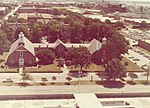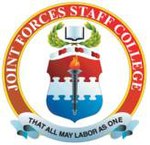Elizabeth River (Virginia)

The Elizabeth River is a 6-mile-long (10 km) tidal estuary forming an arm of Hampton Roads harbor at the southern end of Chesapeake Bay in southeast Virginia in the United States. It is located along the southern side of the mouth of the James River, between the cities of Portsmouth, Norfolk, and Chesapeake. Forming the core of the Hampton Roads harbor, it is heavily supported by its tributaries which depend upon it. Through its Southern Branch and the Albemarle and Chesapeake Canal, the Elizabeth River also is a gateway to points to the south for the Atlantic Intracoastal Waterway, an inland path from the ocean providing a more sheltered navigable waterway to Florida for commercial and recreational boating.
Excerpt from the Wikipedia article Elizabeth River (Virginia) (License: CC BY-SA 3.0, Authors, Images).Elizabeth River (Virginia)
Portsmouth
Geographical coordinates (GPS) Address Nearby Places Show on map
Geographical coordinates (GPS)
| Latitude | Longitude |
|---|---|
| N 36.925 ° | E -76.343611111111 ° |
Address
Portsmouth
Portsmouth
Virginia, United States
Open on Google Maps










